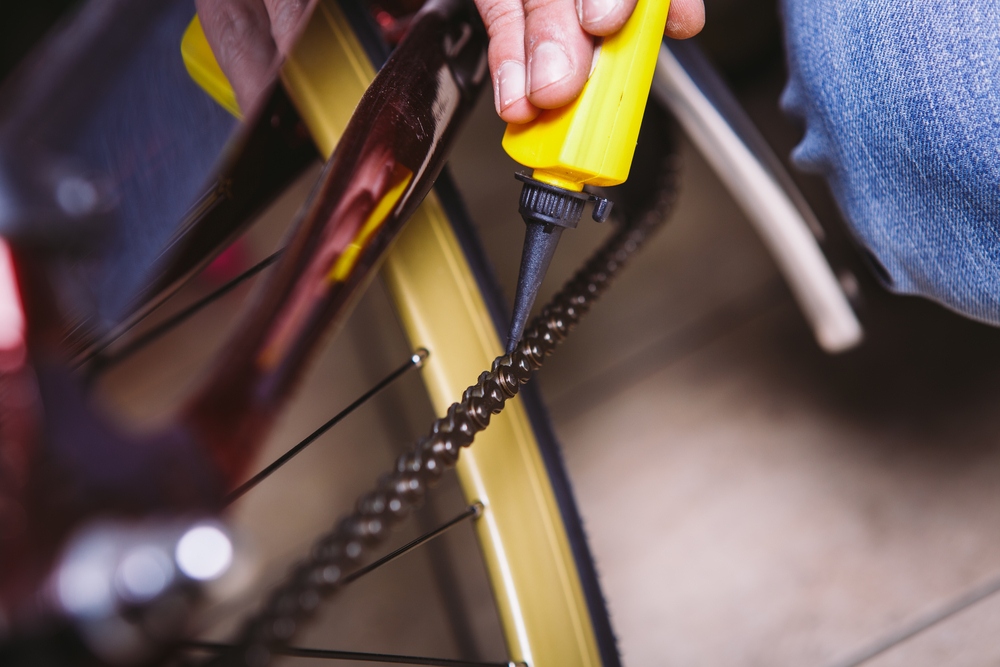First, have your bike tuned up to make sure it is performing well and consider replacing the brake and shifter cables since water can get into the cable housing and reduce your braking and shifting performance over time. You might also opt to get some winter tires. If tire and brake clearance allows it, go for as wide a tire as possible (700 x 30 or more), for better traction.
You could also consider running your tires at the lower end of their pressure rating. Try it on the next wet day and pay close attention to the ride. Can you feel an improvement in traction and control? Do you still feel some bumps in the road? If you don’t feel any road vibration, your tire pressure may be so low that you risk having pinch flats. If you are a light- or middleweight rider, you can probably ride at the lowest recommended pressure. If you’re a heavyweight, you may need to stay above the minimum to keep your tire safe from pinch flats.

You’re going to want to add some accessories that you don’t already have or thought you’d need, such as a decent set of lights, reflectors and fenders. The fenders don’t just keep you from being splashed by winter gunk but also help keep the stuff from gumming up your chain, bottom bracket and drive train – if the fenders are large enough.
This may sound extreme but I know someone whose brake cable froze and left him in a dangerous situation. One way to prevent that is to spray all your cables with WD 40 water displacing fluid, making sure to wipe off any excess. You can also use the product to clean your chain but you have to wash it off and then re-lubricate the chain with regular chain oil. Which is a perfect segue to: try to clean your chain with a chain solvent (or WD 40) and a scrubber or a toothbrush. If road gunk builds up on the chains, it could eventually clog the gears and require a professional tune-up or more expensive repairs. Remember to re-lubricate the chain with an oil-based lubricant before heading out again.

Wipe off your bike after EVERY ride. Keep an old towel handy and use it to wipe the frame, rims, spokes, chainrings, cogset, chain, brake cables and cranks. This will prevent rusting – and puddles where you store the bike. And, once a month or every week, depending on conditions, apply a blast of aerosol lubricant to your bike’s moving parts, to prevent the parts seizing or starting to rust. Try not to spray lubricant on the rims or brakes.
Brake pads wear out more quickly when it’s wet and gunky, so check them regularly to make sure they’re still functional. If your brake pads have a wear line indicator, make sure not to let them wear down below it. If you don’t want to replace your old brake cables, take them off, clean and re-grease them. (This paragraph obviously does not pertain to bikes with disc brakes, which are fine for winter cycling.)
If all this seems like too much work and bother just to ride in the cold but you still want – or, like me, need – to cycle in winter, think about getting a good second-hand bike just to use when the weather turns cold and inclement. If possible, make it a fat bike, otherwise known as mountain bikes with snowshoes. If you buy it second-hand, get it tuned up, check the brakes and gears.
Have fun – and watch out for stray reindeer as you pedal through the snowflakes.




